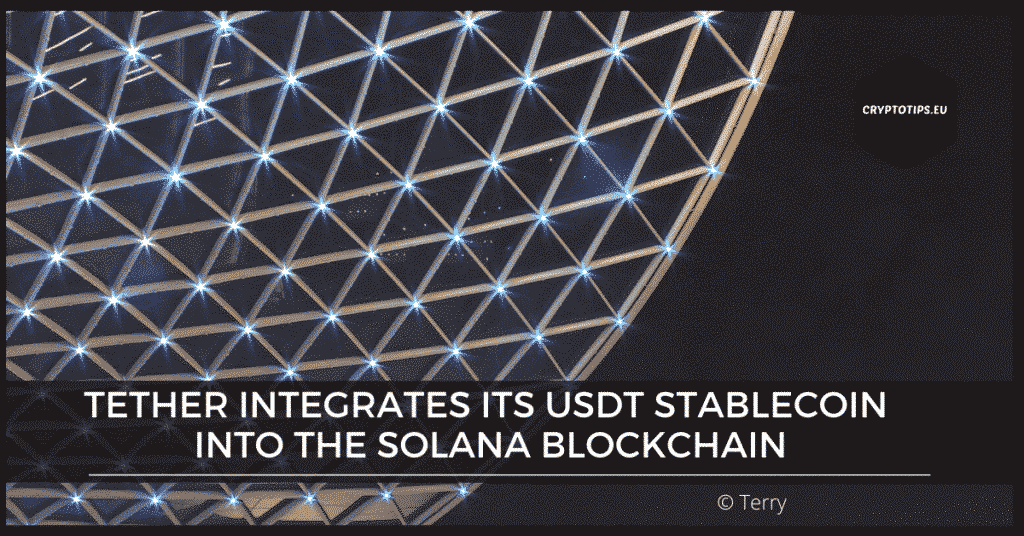Tether integrates its USDT stablecoin into the Solana blockchain
Last Updated on 11 September 2020 by CryptoTips.eu
Tether has integrated its famous USDT stablecoin on the Solana (SOL) blockchain. The news was revealed by Tether in a press release with key details.
Solana network latest to integrate Tether
According to the report, integrating USDT to Solana network will facilitate the construction of Decentralized Finance (DeFi) applications at super speed with low costs.
This is a considerable improvement for both entities. Scalability and transaction fees are two of the biggest obstacles hindering the development of DeFi today.
Once the technical integration is complete, USDT holders will be able to trade at the speed of 50,000 transactions per second and for less than $0.00001 per transaction.
According to Solana Foundation, this strategic collaboration is an important step for Solana and will help move the network forward.
The effect of this integration has been very positive for SOL, the native token of the Solana blockchain. Following the announcement, the price of SOL climbed more than 37% in just 22 minutes, from $2.8 to $3.84 at its highest point. Currently the price is down 5% to $3,27.
Tether CTO Paolo Ardoino believes that the integration of USDT will help the blockchain ecosystem.
Our integration with Solana serves a growing ecosystem of projects that are now being developed and launched on Solana, with Serum being a notable example.
A need to reduce the load on Ethereum
Besides Solana, USDT is also supported by numerous blockchains, including Algorand, EOS, Tron and Bitcoin Cash.
However the vast majority of USDT transactions occur on the Ethereum blockchain. Of the nearly 14.6 billion USDT in circulation at the time of this writing, nearly 8.9 billion is on the Ethereum blockchain, or more than 60% of the total.
USDT is also the second largest consumer of gas on the Ethereum network. Over the past 30 days, stablecoin trades on Ethereum have cost almost $10.5 million in fees.
Thus, its arrival on the Solana blockchain should theoretically reduce the load on Ethereum. However, previous USDT integrations on other blockchains only had minor effects. It will be interesting to see if USDT users migrate to Solana network for transactions in the coming months.
